#skutari
Explore tagged Tumblr posts
Photo
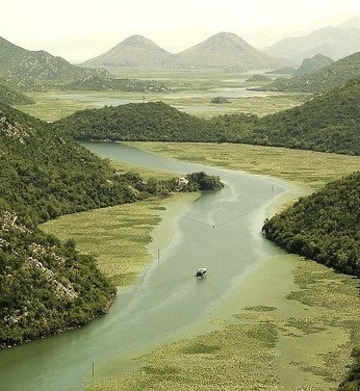
by langkawi on Flickr.Lake Skadar, the largest lake of the Balkans, is shared by Montenegro and Albania and it’s, together with Danube Delta, one of the last habitats of pelicans in Europe.
0 notes
Photo
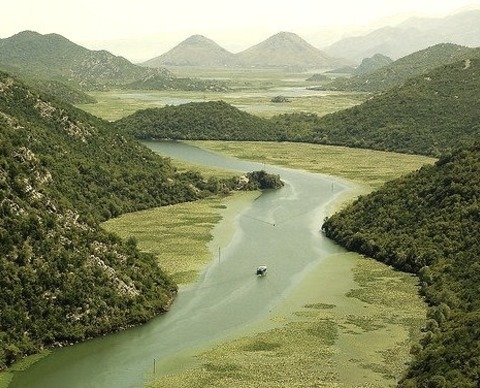
by langkawi on Flickr.Lake Skadar, the largest lake of the Balkans, is shared by Montenegro and Albania and it’s, together with Danube Delta, one of the last habitats of pelicans in Europe.
0 notes
Photo
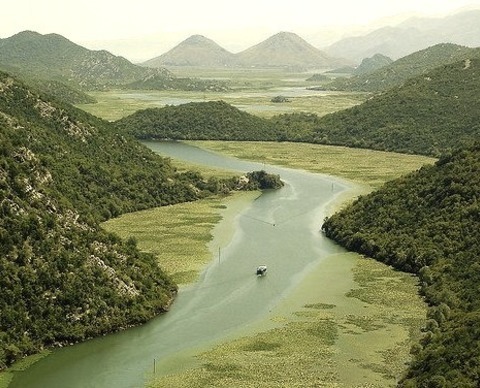
by langkawi on Flickr.Lake Skadar, the largest lake of the Balkans, is shared by Montenegro and Albania and it’s, together with Danube Delta, one of the last habitats of pelicans in Europe.
0 notes
Photo
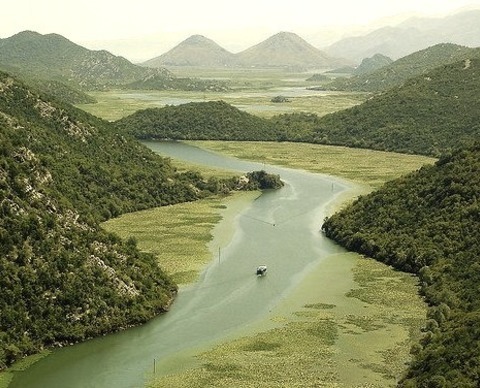
by langkawi on Flickr.Lake Skadar, the largest lake of the Balkans, is shared by Montenegro and Albania and it’s, together with Danube Delta, one of the last habitats of pelicans in Europe.
0 notes
Text
Samu auf Santorini - Teil 1: Kalimera
Es ist mal wieder soweit, es ist Zeit für meine populären Urlaubsposts.
Wir sind vor allem hier, weil mein Vater uns seit Jahren damit in den Ohren liegt, dass er unbedingt mal hin will. Und dabei waren wir Anfang der 2000er mal auf Kreta, meine Oma ist dort über eine Bortsteinkante gestolpert und hat sich den Arm gebrochen und irgendwann später hat mein Vater den Großteil unserer Videoaufnahmen von diesem Urlaub überspielt.
Vielen Danke, dass Sie sich für unsere Flugreise "Highlights des Balkans" entschieden haben.
Der größte See des Balkans und der zweitgrößte Südeuropas: Der Skutari-See zwischen Montenegro und Albanien
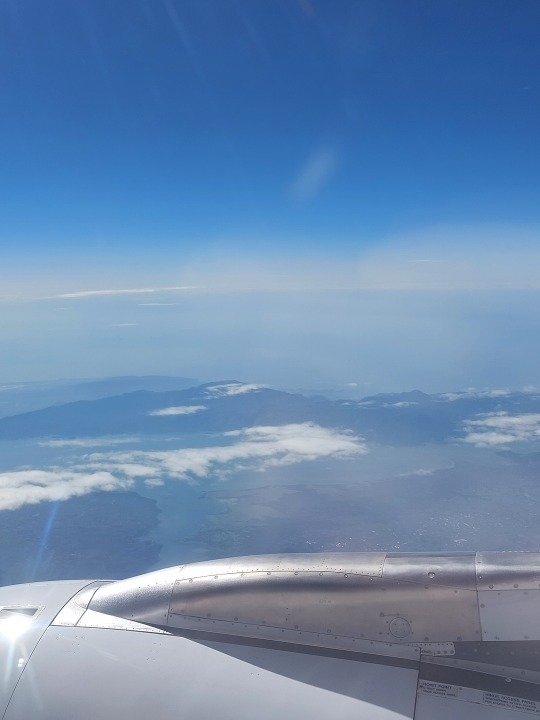
Der zweitgrößte See des Balkans und einer der ältesten Seen der Erde: Der Ohridsee zwischen Nordmazedonien und Albanien

Ein Teil von Athen, die Stadt ist wirklich unglaublich groß
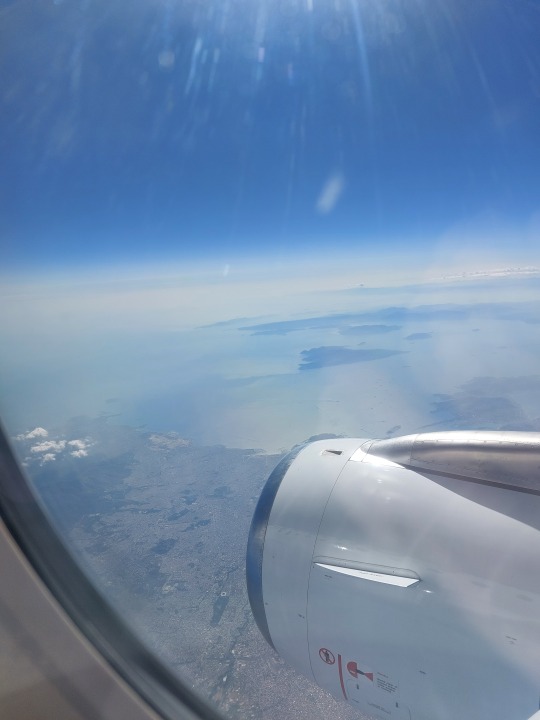
Und schließlich: Santorini von Osten
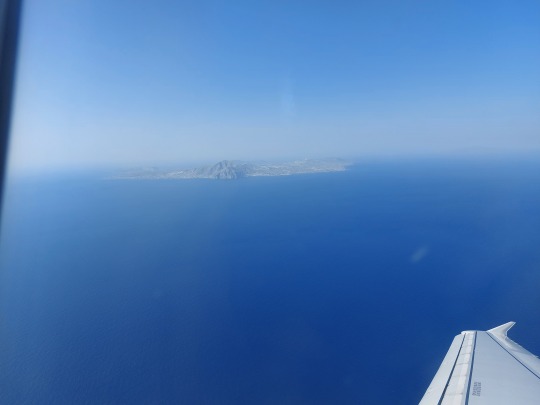
Santorini ist eine Vulkaninsel und die größte Insel des gleichnamigen Archipels an einem überfluteten Vulkankrater. Der Name Santorini kommt vom italienischen "Santa Irene" und stammt noch aus der Zeit des lateinischen Kaiserreichs. Davor wurde die Insel als "Kallíste" (Die Schöne) oder "Thera" bezeichnet, letzteres wird seit dem 19. Jahrhundert auch wieder alternativ verwendet.
Die Bebauung reicht bis zum Kraterrand. Nichts für Leute, die keine Steigungen mögen.
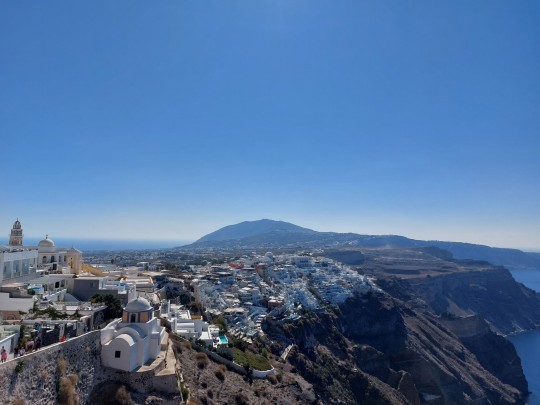
Bei Nacht sogar noch schöner (und mit weniger Touristenmassen)
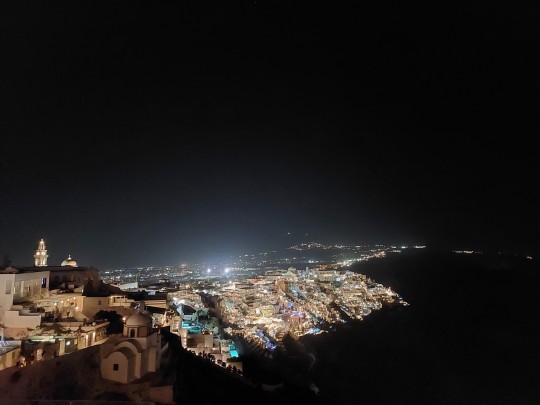
Und weil die Bebauung hier sehr dicht ist, gibt es überall kleine Gassen, in denen man ständig auf Motorradfahrer und Eselscheiße aufpassen muss.

Die drei Glocken von Fira, bekannt von Lebensmittelverpackungen und aus Supermarktprospekten, wenn mal wieder griechische Produkte im Angebot sind. Die karren da Leute mit Kleinbussen hin, nur, damit sie dieses Foto machen können.
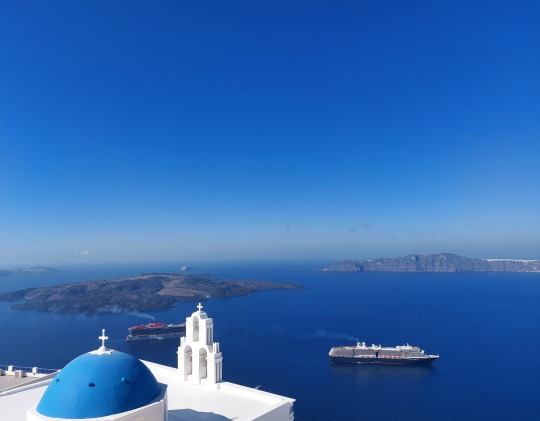
Und wer von Mamma Mia! einfach nicht genug kriegen kann: Dieses Restaurant zeigt dem Film jeden Tag. Dabei wurde der nicht mal hier gedreht.
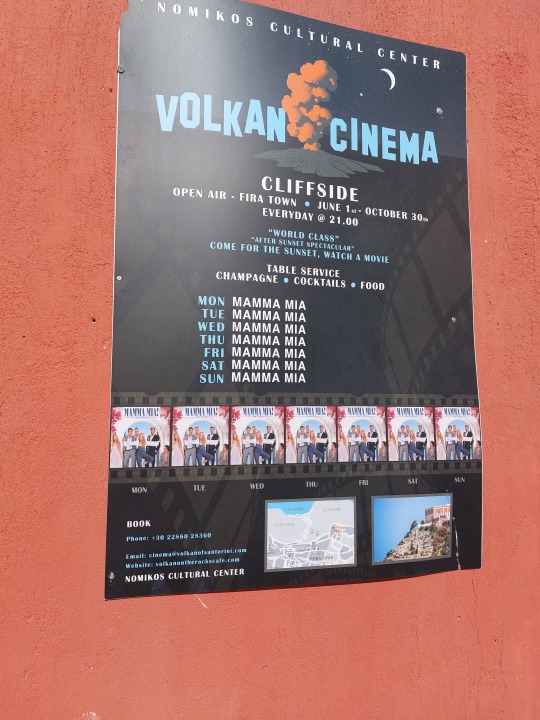
"Yo, Samu, ist Santorini nicht voll teuer?". Kommt drauf an. Der Westen ist generell teurer als der Osten, weil die meisten natürlich unbedingt den Sonnenuntergang sehen wollen. Im Osten gibt es dagegen die einzigen Strände der Insel.
Was Restaurants angeht: Es gibt gerade in den touristischen Gebieten viele Tourifallen, daher auf jeden Fall vorher die Google-Rezensionen und die Preise checken. Und zwar beides. Als wir heute nur kurz die Google-Rezensionen gecheckt haben haben wir 33€ für drei Getränke gezahlt und uns später was zu Essen vom Bäcker geholt.
Aber natürlich gibt es auch weitere bezahlbare Optionen. Für diese Falafel-Box zahlt man 9€.

Und nun zum Schluss noch ein Fun Fact: In Griechenland darf man das Klopapier meist nicht ins Klo schmeißen. Stattdessen kommt es in den Mülleimer daneben. Die Abwasserleitungen stammen noch aus Zeiten, in denen es noch keine Vorschriften zum Gefälle oder Material der Rohre gab. Also hat man einfach die günstigste Variante genommen, was aber dazu führt, dass die Leitungen verstopfen, wenn man Papier reinwirft.
23 notes
·
View notes
Text
Saints&reading: Saturday, August 26, 2023
august 13_august 26
Leavetaking of the Transfiguration of the Lord
TRANSLATION OF THE RELICS OF St MAXIMUS THE CONFESSOR (662)
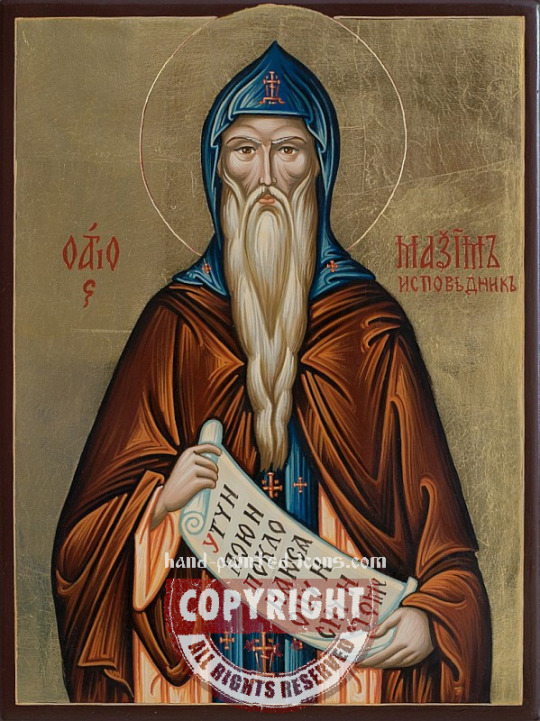
Saint Maximus the Confessor was born in Constantinople around 580 and raised in a pious Christian family. He received an excellent education, studying philosophy, grammar, and rhetoric. He was well-read in the authors of antiquity and he also mastered philosophy and theology. When Saint Maximus entered into government service, he became first secretary (asekretis) and chief counselor to the emperor Heraclius (611-641), who was impressed by his knowledge and virtuous life.
Saint Maximus soon realized that the emperor and many others had been corrupted by the Monothelite heresy, which was spreading rapidly through the East. He resigned from his duties at court, and went to the Chrysopolis monastery (at Skutari on the opposite shore of the Bosphorus), where he received monastic tonsure. Because of his humility and wisdom, he soon won the love of the brethren and was chosen igumen of the monastery after a few years. Even in this position, he remained a simple monk.
In 638, the emperor Heraclius and Patriarch Sergius tried to minimize the importance of differences in belief, and they issued an edict, the “Ekthesis” (“Ekthesis tes pisteos” or “Exposition of Faith),” which decreed that everyone must accept the teaching of one will in the two natures of the Savior. In defending Orthodoxy against the “Ekthesis,” Saint Maximus spoke to people in various occupations and positions, and these conversations were successful. Not only the clergy and the bishops, but also the people and the secular officials felt some sort of invisible attraction to him, as we read in his Life.
When Saint Maximus saw what turmoil this heresy caused in Constantinople and in the East, he decided to leave his monastery and seek refuge in the West, where Monothelitism had been completely rejected. On the way, he visited the bishops of Africa, strengthening them in Orthodoxy, and encouraging them not to be deceived by the cunning arguments of the heretics.
The Fourth Ecumenical Council had condemned the Monophysite heresy, which falsely taught that in the Lord Jesus Christ there was only one nature (the divine). Influenced by this erroneous opinion, the Monothelite heretics said that in Christ there was only one divine will (“thelema”) and only one divine energy (“energia”). Adherents of Monothelitism sought to return by another path to the repudiated Monophysite heresy. Monothelitism found numerous adherents in Armenia, Syria, Egypt. The heresy, fanned also by nationalistic animosities, became a serious threat to Church unity in the East. The struggle of Orthodoxy with heresy was particularly difficult because in the year 630, three of the patriarchal thrones in the Orthodox East were occupied by Monothelites: Constantinople by Sergius, Antioch by Athanasius, and Alexandria by Cyrus.
Saint Maximus traveled from Alexandria to Crete, where he began his preaching activity. He clashed there with a bishop, who adhered to the heretical opinions of Severus and Nestorius. The saint spent six years in Alexandria and the surrounding area.
Patriarch Sergius died at the end of 638, and the emperor Heraclius also died in 641. The imperial throne was eventually occupied by his grandson Constans II (642-668), an open adherent of the Monothelite heresy. The assaults of the heretics against Orthodoxy intensified. Saint Maximus went to Carthage and he preached there for about five years. When the Monothelite Pyrrhus, the successor of Patriarch Sergius, arrived there after fleeing from Constantinople because of court intrigues, he and Saint Maximus spent many hours in debate. As a result, Pyrrhus publicly acknowledged his error, and was permitted to retain the title of “Patriarch.” He even wrote a book confessing the Orthodox Faith. Saint Maximus and Pyrrhus traveled to Rome to visit Pope Theodore, who received Pyrrhus as the Patriarch of Constantinople.
In the year 647 Saint Maximus returned to Africa. There, at a council of bishops Monotheletism was condemned as a heresy. In 648, a new edict was issued, commissioned by Constans and compiled by Patriarch Paul of Constantinople: the “Typos” (“Typos tes pisteos” or “Pattern of the Faith”), which forbade any further disputes about one will or two wills in the Lord Jesus Christ. Saint Maximus then asked Saint Martin the Confessor (April 14), the successor of Pope Theodore, to examine the question of Monothelitism at a Church Council. The Lateran Council was convened in October of 649. One hundred and fifty Western bishops and thirty-seven representatives from the Orthodox East were present, among them Saint Maximus the Confessor. The Council condemned Monothelitism, and the Typos. The false teachings of Patriarchs Sergius, Paul and Pyrrhus of Constantinople, were also anathematized.
When Constans II received the decisions of the Council, he gave orders to arrest both Pope Martin and Saint Maximus. The emperor’s order was fulfilled only in the year 654. Saint Maximus was accused of treason and locked up in prison. In 656 he was sent to Thrace, and was later brought back to a Constantinople prison.
The saint and two of his disciples were subjected to the cruelest torments. Each one’s tongue was cut out, and his right hand was cut off. Then they were exiled to Skemarum in Scythia, enduring many sufferings and difficulties on the journey.
After three years, the Lord revaled to Saint Maximus the time of his death (August 13, 662). Three candles appeared over the grave of Saint Maximus and burned miraculously. This was a sign that Saint Maximus was a beacon of Orthodoxy during his lifetime, and continues to shine forth as an example of virtue for all. Many healings occurred at his tomb.
In the Greek Prologue, August 13 commemorates the Transfer of the Relics of Saint Maximus to Constantinople, but it could also be the date of the saint’s death. It may be that his memory is celebrated on January 21 because August 13 is the Leavetaking of the Feast of the Transfiguration of the Lord.
Saint Maximus has left to the Church a great theological legacy. His exegetical works contain explanations of difficult passages of Holy Scripture, and include a Commentary on the Lord’s Prayer and on Psalm 59, various “scholia” or “marginalia” (commentaries written in the margin of manuscripts), on treatises of the Hieromartyr Dionysius the Areopagite (October 3) and Saint Gregory the Theologian (January 25). Among the exegetical works of Saint Maximus are his explanation of divine services, entitled “Mystagogia” (“Introduction Concerning the Mystery”).
The dogmatic works of Saint Maximus include the Exposition of his dispute with Pyrrhus, and several tracts and letters to various people. In them are contained explanations of the Orthodox teaching on the Divine Essence and the Persons of the Holy Trinity, on the Incarnation of the Word of God, and on “theosis” (“deification”) of human nature.
“Nothing in theosis is the product of human nature,” Saint Maximus writes in a letter to his friend Thalassius, “for nature cannot comprehend God. It is only the mercy of God that has the capacity to endow theosis unto the existing... In theosis man (the image of God) becomes likened to God, he rejoices in all the plenitude that does not belong to him by nature, because the grace of the Spirit triumphs within him, and because God acts in him” (Letter 22).
Saint Maximus also wrote anthropological works (i.e. concerning man). He deliberates on the nature of the soul and its conscious existence after death. Among his moral compositions, especially important is his “Chapters on Love.” Saint Maximus the Confessor also wrote three hymns in the finest traditions of church hymnography, following the example of Saint Gregory the Theologian.
The theology of Saint Maximus the Confessor, based on the spiritual experience of the knowledge of the great Desert Fathers, and utilizing the skilled art of dialectics worked out by pre-Christian philosophy, was continued and developed in the works of Saint Simeon the New Theologian (March 12), and Saint Gregory Palamas (November 14).
SAINT TIKHON OF ZADONSK, BISHOP OF VORONEZH (1783)

Saint Tikhon of Zadonsk, Bishop of Voronezh (in the world Timothy), was born in the year 1724 in the village of Korotsk in the Novgorod diocese, into the family of the cantor Sabellius Kirillov. (Afterward, a new family name, Sokolov, was given him by the head of the Novgorod Seminary). His father died when Timothy was a young child, leaving the family in such poverty that his mother was barely able to make ends meet. She wanted to give him to be raised by a neighbor, a coachman, since there was no other way to feed the family, but his brother Peter would not permit this. Timothy often worked a whole day with the peasants for a single piece of black bread.
As a thirteen-year-old boy, he was sent to a clergy school near the Archbishop of Novgorod's residence, and earned his keep by working with the vegetable gardeners. In 1740, he was accepted under a state grant set up for the Novgorod Seminary. The youth excelled at his studies. Upon finishing seminary in 1754, he became a teacher there, first in Greek, and later in Rhetoric and Philosophy. In the year 1758, he was tonsured with the name Tikhon. That same year he was appointed as prefect of the Seminary.
In 1759, he was transferred to Tver, and was elevated to the rank of Archimandrite of Zheltikov Monastery. Later, he was appointed Rector of the Tver Seminary and, at the same time, Superior of Otroch Monastery.
His election as bishop was providential. Metropolitan Demetrios, the presiding member of the Holy Synod, had intended to transfer the young Archimandrite to the Trinity-Sergiev Lavra. On the day of Pascha, at Peterburg, Archimandrite Tikhon was one of eight candidates being considered for selection as vicar bishop for Novogorod. Metropolitan Demetrios thought he was too young for that position, but agreed to submit his name. The lot fell on Archimandrite Tikhon three times.
On the same day, during the Cherubic Hymn, Bishop Athanasios of Tver, without realizing it, commemorated him as a bishop while cutting particles from the prosphora at the Table of Oblation. On May 13, 1761 he was consecrated as Bishop of Keksgolma and Ladoga (i.e., vicar bishop of the Novgorod diocese).
In 1763, Saint Tikhon was transferred to the See of Voronezh. For the four and a half years that he administered the diocese of Voronezh, Vladyka provided constant edification, both by his life and by his numerous pastoral counsels and soul-profiting books. He also wrote a whole series of works for pastors:


1 CORINTHIANS 1:26-29
26 For you see your calling, brethren, that not many wise according to the flesh, not many mighty, not many noble, are called. 27 But God has chosen the foolish things of the world to put to shame the wise, and God has chosen the weak things of the world to put to shame the things which are mighty; 28 and the base things of the world and the things which are despised God has chosen, and the things which are not, to bring to nothing the things that are, 29 that no flesh should glory in His presence.
MATTHEW 20:29-34
29 Now as they went out of Jericho, a great multitude followed Him. 30 And behold, two blind men sitting by the road, when they heard that Jesus was passing by, cried out, saying, "Have mercy on us, O Lord, Son of David!" 31 Then the multitude warned them that they should be quiet; but they cried out all the more, saying, "Have mercy on us, O Lord, Son of David!" 32 So Jesus stood still and called them, and said, "What do you want Me to do for you?" 33 They said to Him, "Lord, that our eyes may be opened." 34 So Jesus had compassion and touched their eyes. And immediately their eyes received sight, and they followed Him.
#orthodoxy#orthodoxchristianity#easternorthodoxchurch#originofchristianity#spirituality#holyscriptures#gospel#wisdom#saints
3 notes
·
View notes
Text

İstanbuldaki Semt İsimleri nereden geliyor!
(Bazı Semt İsimleri hakkında internette birden fazla rivayet dolaşmaktadır)
"Merak müthiş bir duygudur. Araştırmak, incelemek, derinlemesine.) Hadi gelin Tarih kokan Taşı toprağı altın dediğimiz Istanbul'un semtlerin isimleri nerden geliyor.?
KAĞITHANE
Semtin adı İstanbul'da Haliç körfezine dökülen bir dere ile bunun vadisinde eski kağıt imalathanelerinin bulunması nedeni ile bu adı almıştır.
--------------------
ŞİŞLİ
Şiş yapımıyla uğraşan ve Şişçiler diye anılan bir ailenin burada bir konağı olduğu ve 'Şişçilerin Konağı'nın zamanla değişikliğe uğrayarak 'Şişlilerin Konağı' hâline gelmesiyle semtin adının Şişli olarak kaldığı anlatılıyor.
--------------------
PENDİK
Bizans Döneminde “her tarafı surlarla çevrili” anlamını taşıyan Pantecion, Latin egemenliğinde ise “duvar” anlamına gelen Peninda-kot ismini almıştır. Bu da bizi, Pendik'in egemen olan devletlerce bir savunma hattı olarak kullanıldığı bilgisine götürür.
--------------------
SÜTLÜCE
Bugün Sütlüce semtinin olduğu yerde Süt Menbat isimli bir Rum köyü vardı. Köyün bir köşesindeki bakır bir kadın heykelinin memelerinden su akar; bu suyun, kadınların sütünü çoğalttığına inanılırdı. Bundan dolayı semt, Sütlüce olarak anılır oldu.
--------------------
AHIRKAPI
Marmara Denizi'nin kıyısında yer alan yedi ahır kapısından birisi olan bu semte, Padişah atlarının bulunduğu has ahırın yanında yer aldığı için Ahırkapı ismi verildi.
--------------------
TAHTAKALE
Sözlük anlamı 'kale altı' olan Taht-el-kale'nin bozulmasıyla Tahtakale'ye dönüşen semtin, Mercan ya da Beyazıt dolaylarındaki eski sur benzeri yapının aşağı kotunda yer aldığı için bu ismi aldığı tahmin ediliyor.
--------------------
ŞAŞKINBAKKAL
Henüz yerleşimin olmadığı dönemlerde yaz günleri denizden yararlanmak için bölgeye gelenlere bir bakkal dükkânı açıldığını görenler, burada iş yapılmayacağını düşünerek bakkala "şaşkın bakkal" yakıştırması yaptılar. Bundan sonra da semt Şaşkınbakkal olarak anılmaya başlandı.
--------------------
EMİNÖNÜ
Osmanlı döneminde çarşıdaki esnafı denetleme yetkisi 'Emin'lere aitti. Semt, adını burada bulunan 'Gümrük Eminliği'nden alıyor.
--------------------
TAKSİM
Osmanlı zamanında sucuların; suyu, halka taksim ettikleri yer, Taksim olarak anılmaya başlandı.
--------------------
ÜSKÜDAR
Bizans devrinde, Skutari denilen asker kışlaları, şehrin bu yakasında yer aldığı için semt Skutarion diye anılıyordu. Bu isim zamanla Üsküdar'a dönüştü.
--------------------
ÇENGELKÖY
Eskiden gemi çapaları bu köyde yapıldığı için isminin buradan geldiği tahmin ediliyor.
--------------------
GALATA
Gala, Rumcada "süt" anlamına geliyor. Bir rivayete göre Galata'nın adı semtteki süthanelere gönderme yapılarak türetildi. Başka bir görüşe göre ise İtalyanca 'denize inen yol' anlamına gelen 'galata' kelimesi düşünülerek bu isim verildi.
--------------------
BOSTANCI
Semt, adını eskiden her türlü meyve ve sebzenin yetiştirildiği bostanlardan biri olmasından alıyor
--------------------
BEYOĞLU
Semtin isminin nerden geldiği konusunda çeşitli rivayetler bulunuyor. Bunlardan ilkine göre, İslamiyet'i kabul edip burada oturmaya başlayan Pontus Prensi'nden adını alıyor semt. Diğerine göreyse, 'Bey Oğlu' diye anılan Venedik Prensi'nin burada oturmasından geliyor semtin adı. Son bir rivayet de, burada oturan Venedik elçisine, yazışmalarda, "Beyoğlu" diye hitap edilmesinden semtin bu adla anıldığını söylüyor.
--------------------
VELİEFENDİ
Hipodrom bir zamanlar Şeyhülislam Veli Efendi'nin sahibi olduğu topraklar üzerinde kurulduğundan semtin adı Veli Efendi'yle anılıyor.
--------------------
ÇATLADIKAPI
Bizans zamanında yapılan surların Sidera adı bir verilen kapısı, 1532 tarihinde meydana gelen depremde çatlayınca, hem semt hem de kapı Çatladıkapı olarak anılmaya başladı
--------------------
FERİKÖY
Semt adını Sultan Abdülmecit ve Abdülaziz dönemlerinde yaşayan Madam Feri’den alıyor. Bölgede bulunan geniş topraklar padişah tarafından Madam Feri’nin eşine bağışlanmıştı. Ama eşi ölünce semt onun ismiyle anılmaya başlandı.
--------------------
HORHOR
Fatih Sultan Mehmet bölge civarında yürürken yerin altından su sesleri duyar ve yanındakilere, “Buraya bir çeşme yapın baksanıza ‘hor hor’ su sesleri geliyor” der ve buraya bir çeşme yapılır. Çeşme de semt de Horhor ismiyle anılıyor.
--------------------
UNKAPANI
Bazı satış yerlerinde Arapça’da ‘Kabban’ adını taşıyan büyük teraziler bulunduğundan, buraları Kapan adını taşırdı. Sahiline buğday ve arpa yüklü gemiler demirlediğinden, semt bu adı aldı.
--------------------
OKMEYDANI
Fetih Ordusu kuşatmanın bir kısmını burada kurulan karargâhta geçirmiş. Semtin ismi de böylelikle Okmeydanı olarak kalmış.
--------------------
KADIKÖY
Khalkedon, Kadıköy'ün eski adı. Hikayeye göre, milattan önce 7. yüzyılda, bir kavim kendilerine yeni bir yer arar yerleşmek için ama nereye yerleşeceklerini bilemez. ... Sarayburnu'na yerleşirler, Byzantion şehrini kurarlar ve karşı kıyıya da Khalkedon yani Körler Ülkesi adını takarlar.
--------------------
BEYOĞLU
Semtin isminin nerden geldiği konusunda çeşitli rivayetler bulunuyor. Bunlardan ilkine göre, Islamiyet'i kabul edip burada oturmaya başlayan Pontus Prensinden adını alıyor semt. Diğerine göreyse, 'Bey Oğlu' diye anılan Venedik Prensinin burada oturmasından geliyor semtin adı.
--------------------
TUZLA
Osmanlı Döneminde ıstanbul'un tuz ihtiyacını karşılayan, burada bulunan Tuz Gölünden adını almaktadır. Yetmiş yıl evveline kadar bu gölden tuz çıkarılmaktaydı.
-------------------
KARTAL
Kartal adını ilk defa Bizans zamanında sahilde balık avlamak için gelip buraya yerleşen "Kartelli" isminde bir balıkçıdan almıştır.
--------------------
MECİDİYEKÖY
Abdülmecid, Sırbistan civarından gelen muhacirleri iskân etmek için, burada bulunan dutlukları onlara vererek bir köy kurmalarını sağlamıştır. Köye de Abdülmecid'in anısına; “Mecidiye Köyü” adı konulmuştur.
--------------------
DOLMABAHÇE
Beşiktaş’ta Dolmabahçe Sarayı’nın olduğu alanda 16. yüzyılda çok güzel bir koy vardı. Hatta Osmanlı kaptan-ı deryası, gemilerini bu koya demirlerdi. 17. yüzyılda koy, neredeyse bir bataklığa dönüştü. Bu yüzden de bataklık doldurularak kurutuldu ve padişahların gelerek dinlendiği bir hasbahçeye dönüştürüldü. Denizden doldurularak meydana getirildiği için bu bahçeye “Dolmabahçe” adı verildi.
--------------------
SARIYER
Osmanlı dönemi başlarına dek yaygın olarak “Simas” ismi kullanılmıştır. “Simas” isminin “Sarıyer” ismine dönüşmesi hakkında kesin bir bilgi bulunmazken çeşitli söylenceler bulunmaktadır. Bu söylencelerden biri “Sarıyer” isminin, İstanbul’un fethi sırasında ölen “Sarı Er” lakaplı bir yeniçeriden alınmış olduğuna dayanan söylencedir. Buna göre semtte türbesi bulunan “Sarı Er” zaman içinde “Sarı Baba” ismiyle anılmaya başlar.
--------------------
RUMELİ KAVAĞI / ANADOLU KAVAĞI
Osmanlılar döneminde, Karadeniz’den İstanbul’a giriş-çıkış yapan gemiler buraya uğramak zorundaydı. Deniz gümrüğü işlevini üstlenen karakollara kavak adı verilirdi. Bu gümrüklerden Rumeli yakasında olanına verilen; "Anadolu-Kavağı (gümrüğü)"nün hemen yanındaki köy de aynı isimle anılmaya başlandı.
Bir diğer rivayete göre de bu bölgelerde bulunan büyük kavak ağaçları dolayısı ile bölge bu adları almışlardır.
--------------------
BAKIRKÖY
Bizanslıların 'Makri hori' dedikleri semt, 14. yüzyılda Osmanlıların eline geçince 'Makriköy' adını aldı. 1925'te ulusal sınırlar içindeki yabancı kökenli adların değiştirilmesi sırasında Atatürk'ün isteğiyle semt Bakırköy adını aldı.
--------------------
AKATLAR
Osmanlılar zamanında bu bölgede at yetiştirilirmiş adı da buradan gelmedir.
--------------------
EMİRGAN
istanbul boğazı'nın rumeli kıyısında bir semt. adının kökeni konusunda evliya çelebi: "dördüncü murad han revan kalesini fethedince, o sırada kalede revan hanı olan emîr gûne yusuf han'ı istanbul'a getirip bu çimenlik yerde bir bahçe yaparak, emîr gûne han'a ihsan eyledi." der. emirgân adının buradan gelme ihtimali hayli yüksektir.
--------------------
AŞİYAN
AşiyanFarsça'da kuş yuvası anlamına gelen Aşiyan, günümüzdeki ismini şair Tevfik Fikret'in burada bulunan evinden alıyor.
--------------------
BEBEK
İsmini, Fatih’in bu bölgenin muhafazasına memur ettiği bölükbaşının ‘Bebek’ lakabından almıştı. Bebek Çelebi ya da Bebek Çavuş’un bu semtte bir köşkü ve sonradan hasbahçe olan bir bahçesi vardı.
--------------------
FLORYA
Reşat Ekrem Koçu'ya göre İskender efendi namlı bir kişi burada yaptırdığı bahçeye doğduğu kasabanın ismini vermiş (Forina Arnavutluk'ta küçük bir kasabadır) isim zamanla Florya'ya dönüşmüş ve semtin ismi olarak benimsenmiştir.
--------------------
BOMONTİ
Semt adını, 1902 yılında Bomonti Kardeşlerin burada kurdukları Bomonti Bira Fabrikası’ndan almıştır. Bu bina daha sonra İstanbul Tekel Bira Fabrikası olarak anılmıştır.
--------------------
BEŞİKTAŞ
Bu semt ‘Kone Petro’ adıyla anılıyordu. Anlamı ‘Taş Beşik’ idi. Rahip Yaşka, Hz İsa’nın beşiğini Kudüs’ten getirip, burada yaptırdığı kiliseye koymuştur. Hz. İsa çocukluğunda bu beşik içinde yıkanmış, bu sebeple bu kilise Rumlar arasında ‘Taş Beşik’ olarak ün yapmıştır. Rahip ölünce beşiğin Ayasofya’ya bırakıldığı söylenir. Bu söylenti bir delile dayanmadığı için efsane niteliği taşımaktadır.
--------------------
4 notes
·
View notes
Photo

Fotoğrafta halifenin Çamlıca'daki yaz meskeninde, Skutari'de (şimdi Üsküdar) kızı prenses Duri Çehvar'la birlikte - Photographed in his summer residence of Çamlıca, in Scutari (modern-day Üsküdar), with his daughter, the princess Durri Chehvar.
#1922#halife#abdülmecid#osmanlı dönemi#ottoman period#turkey#türkiye#üsküdar#skutari#çamlıca#tarih#history#duri çehvar#photography#fotoğraf
21 notes
·
View notes
Photo

Ich habe mir sagen lassen, er war lecker...Ist ja nicht so meins #food #lunch #fish #lakefishing #traveladdict #travelgram #traveller #traveling #travel #travelphotography #travelmore #nature #mne #montenegro #skutari #skutarisee #lake #unesco #unterwegs #sunnyday #summer #lakeskadar #lakeskadarnationalpark #skadar (hier: Lake Skadar)
#sunnyday#food#skadar#lake#nature#unesco#skutarisee#mne#lakefishing#skutari#fish#travelgram#lakeskadar#lakeskadarnationalpark#traveller#unterwegs#travelphotography#traveladdict#travel#summer#montenegro#lunch#traveling#travelmore
1 note
·
View note
Photo

by langkawi on Flickr.Lake Skadar, the largest lake of the Balkans, is shared by Montenegro and Albania and it’s, together with Danube Delta, one of the last habitats of pelicans in Europe.
5 notes
·
View notes
Photo

Crossroad #crnagora #trip #august2017 #montenegro #roadtrip #mountains #balcani #electricity #skutari #skadar #jazero #lake #kodak #analog #analogphotography #kodakretina #kodakretinaia #35mm #35mmphotography #portra #portra400 #portra400film #kodakprofessional #asa400 #kodak#kodakportra #ishotfilm #filmisnotdead #color #colorphotography (presso Lake Skadar) https://www.instagram.com/p/BsqSSaLhNIm/?utm_source=ig_tumblr_share&igshid=kofrb7lsse3w
#crnagora#trip#august2017#montenegro#roadtrip#mountains#balcani#electricity#skutari#skadar#jazero#lake#kodak#analog#analogphotography#kodakretina#kodakretinaia#35mm#35mmphotography#portra#portra400#portra400film#kodakprofessional#asa400#kodakportra#ishotfilm#filmisnotdead#color#colorphotography
0 notes
Photo

by langkawi on Flickr.Lake Skadar, the largest lake of the Balkans, is shared by Montenegro and Albania and it’s, together with Danube Delta, one of the last habitats of pelicans in Europe.
1 note
·
View note
Photo

by langkawi on Flickr.Lake Skadar, the largest lake of the Balkans, is shared by Montenegro and Albania and it’s, together with Danube Delta, one of the last habitats of pelicans in Europe.
1 note
·
View note
Photo

by langkawi on Flickr.Lake Skadar, the largest lake of the Balkans, is shared by Montenegro and Albania and it’s, together with Danube Delta, one of the last habitats of pelicans in Europe.
1 note
·
View note
Photo

by langkawi on Flickr.Lake Skadar, the largest lake of the Balkans, is shared by Montenegro and Albania and it’s, together with Danube Delta, one of the last habitats of pelicans in Europe.
1 note
·
View note
Text
Saints&Reading: Saturday, February 3, 2024
january 21_february 3
VENERABLE MAXIMUS THE CONFESSOR (662)

Saint Maximus the Confessor was born in Constantinople around 580 and raised in a pious Christian family. He received an excellent education, studying philosophy, grammar, and rhetoric. He was well-read in the authors of antiquity and he also mastered philosophy and theology. When Saint Maximus entered into government service, he became first secretary (asekretis) and chief counselor to the emperor Heraclius (611-641), who was impressed by his knowledge and virtuous life.
Saint Maximus soon realized that the emperor and many others had been corrupted by the Monothelite heresy, which was spreading rapidly through the East. He resigned from his duties at court, and went to the Chrysopolis monastery (at Skutari on the opposite shore of the Bosphorus), where he received monastic tonsure. Because of his humility and wisdom, he soon won the love of the brethren and was chosen igumen of the monastery after a few years. Even in this position, he remained a simple monk.
In 638, the emperor Heraclius and Patriarch Sergius tried to minimize the importance of differences in belief, and they issued an edict, the “Ekthesis” (“Ekthesis tes pisteos” or “Exposition of Faith),” which decreed that everyone must accept the teaching of one will in the two natures of the Savior. In defending Orthodoxy against the “Ekthesis,” Saint Maximus spoke to people in various occupations and positions, and these conversations were successful. Not only the clergy and the bishops, but also the people and the secular officials felt some sort of invisible attraction to him, as we read in his Life.
When Saint Maximus saw what turmoil this heresy caused in Constantinople and in the East, he decided to leave his monastery and seek refuge in the West, where Monothelitism had been completely rejected. On the way, he visited the bishops of Africa, strengthening them in Orthodoxy, and encouraging them not to be deceived by the cunning arguments of the heretics.
The Fourth Ecumenical Council had condemned the Monophysite heresy, which falsely taught that in the Lord Jesus Christ there was only one nature (the divine). Influenced by this erroneous opinion, the Monothelite heretics said that in Christ there was only one divine will (“thelema”) and only one divine energy (“energia”). Adherents of Monothelitism sought to return by another path to the repudiated Monophysite heresy. Monothelitism found numerous adherents in Armenia, Syria, Egypt. The heresy, fanned also by nationalistic animosities, became a serious threat to Church unity in the East. The struggle of Orthodoxy with heresy was particularly difficult because in the year 630, three of the patriarchal thrones in the Orthodox East were occupied by Monothelites: Constantinople by Sergius, Antioch by Athanasius, and Alexandria by Cyrus.
Saint Maximus traveled from Alexandria to Crete, where he began his preaching activity. He clashed there with a bishop, who adhered to the heretical opinions of Severus and Nestorius. The saint spent six years in Alexandria and the surrounding area.
Patriarch Sergius died at the end of 638, and the emperor Heraclius also died in 641. The imperial throne was eventually occupied by his grandson Constans II (642-668), an open adherent of the Monothelite heresy. The assaults of the heretics against Orthodoxy intensified. Saint Maximus went to Carthage and he preached there for about five years. When the Monothelite Pyrrhus, the successor of Patriarch Sergius, arrived there after fleeing from Constantinople because of court intrigues, he and Saint Maximus spent many hours in debate. As a result, Pyrrhus publicly acknowledged his error, and was permitted to retain the title of “Patriarch.” He even wrote a book confessing the Orthodox Faith. Saint Maximus and Pyrrhus traveled to Rome to visit Pope Theodore, who received Pyrrhus as the Patriarch of Constantinople.
In the year 647 Saint Maximus returned to Africa. There, at a council of bishops Monotheletism was condemned as a heresy. In 648, a new edict was issued, commissioned by Constans and compiled by Patriarch Paul of Constantinople: the “Typos” (“Typos tes pisteos” or “Pattern of the Faith”), which forbade any further disputes about one will or two wills in the Lord Jesus Christ. Saint Maximus then asked Saint Martin the Confessor (April 14), the successor of Pope Theodore, to examine the question of Monothelitism at a Church Council. The Lateran Council was convened in October of 649. One hundred and fifty Western bishops and thirty-seven representatives from the Orthodox East were present, among them Saint Maximus the Confessor. The Council condemned Monothelitism, and the Typos. The false teachings of Patriarchs Sergius, Paul and Pyrrhus of Constantinople, were also anathematized.
When Constans II received the decisions of the Council, he gave orders to arrest both Pope Martin and Saint Maximus. The emperor’s order was fulfilled only in the year 654. Saint Maximus was accused of treason and locked up in prison. In 656 he was sent to Thrace, and was later brought back to a Constantinople prison.
The saint and two of his disciples were subjected to the cruelest torments. Each one’s tongue was cut out, and his right hand was cut off. Then they were exiled to Skemarum in Scythia, enduring many sufferings and difficulties on the journey.
After three years, the Lord revaled to Saint Maximus the time of his death (August 13, 662). Three candles appeared over the grave of Saint Maximus and burned miraculously. This was a sign that Saint Maximus was a beacon of Orthodoxy during his lifetime, and continues to shine forth as an example of virtue for all. Many healings occurred at his tomb.
In the Greek Prologue, August 13 commemorates the Transfer of the Relics of Saint Maximus to Constantinople, but it could also be the date of the saint’s death. It may be that his memory is celebrated on January 21 because August 13 is the Leavetaking of the Feast of the Transfiguration of the Lord.
Saint Maximus has left to the Church a great theological legacy. His exegetical works contain explanations of difficult passages of Holy Scripture, and include a Commentary on the Lord’s Prayer and on Psalm 59, various “scholia” or “marginalia” (commentaries written in the margin of manuscripts), on treatises of the Hieromartyr Dionysius the Areopagite (October 3) and Saint Gregory the Theologian (January 25). Among the exegetical works of Saint Maximus are his explanation of divine services, entitled “Mystagogia” (“Introduction Concerning the Mystery”).
The dogmatic works of Saint Maximus include the Exposition of his dispute with Pyrrhus, and several tracts and letters to various people. In them are contained explanations of the Orthodox teaching on the Divine Essence and the Persons of the Holy Trinity, on the Incarnation of the Word of God, and on “theosis” (“deification”) of human nature.
“Nothing in theosis is the product of human nature,” Saint Maximus writes in a letter to his friend Thalassius, “for nature cannot comprehend God. It is only the mercy of God that has the capacity to endow theosis unto the existing... In theosis man (the image of God) becomes likened to God, he rejoices in all the plenitude that does not belong to him by nature, because the grace of the Spirit triumphs within him, and because God acts in him” (Letter 22).
Saint Maximus also wrote anthropological works (i.e. concerning man). He deliberates on the nature of the soul and its conscious existence after death. Among his moral compositions, especially important is his “Chapters on Love.” Saint Maximus the Confessor also wrote three hymns in the finest traditions of church hymnography, following the example of Saint Gregory the Theologian.
The theology of Saint Maximus the Confessor, based on the spiritual experience of the knowledge of the great Desert Fathers, and utilizing the skilled art of dialectics worked out by pre-Christian philosophy, was continued and developed in the works of Saint Simeon the New Theologian (March 12), and Saint Gregory Palamas (November 14).
ST MARTYR AGNES OF ROME (304)

The holy Virgin Martyr Agnes was born at Rome during the third century. Her parents were Christians and they raised her in the Christian Faith. From her youth she devoted herself to God, and dedicated herself to a life of virginity, refusing all other suitors.
When she refused to enter into marriage with the son of the city official Symphronius, one of his associates revealed to him that Agnes was a Christian. The wicked Eparch decided to subject the holy virgin to shame and he ordered that she be stripped and and sent to a brothel for disdaining the pagan gods. But the Lord would not permit the saint to suffer shame. As soon as she was disrobed, long thick hair grew from her head covering her body. An angel was also appointed to guard her. Standing at the door of the brothel, he shone with a heavenly light which blinded anyone who came near her.
The son of the Eparch also came to defile the virgin, but fell down dead before he could touch her. Through the fervent prayer of Saint Agnes, he was restored to life. Before his father and many other people he proclaimed, “There is one God in the heavens and on earth: the Christian God, and the other gods are but dust and ashes!” After seeing this miracle, 160 men believed in God and were baptized, and then suffered martyrdom.
Saint Agnes, at the demand of the pagan priests, was given over to torture. They tried to burn her as a witch, but the saint remained unharmed in the fire, praying to God. After this they killed her by stabbing her in the throat. Through her death at the age of thirteen, Saint Agnes escaped everlasting death and inherited eternal life. The holy virgin martyr was buried by her parents in a field they owned outside of Rome.
Many miracles occurred at the grave of Saint Agnes. Her holy and grace-filled relics rest in the church built in her honor, along the Via Nomentana.
Source: Orthodox Church in America_OCA


COLOSSIANS 1:3-6
3 We give thanks to the God and Father of our Lord Jesus Christ, praying always for you, 4 since we heard of your faith in Christ Jesus and of your love for all the saints; 5 because of the hope which is laid up for you in heaven, of which you heard before in the word of the truth of the gospel, 6 which has come to you, as it has also in all the world, and is bringing forth fruit, as it is also among you since the day you heard and knew the grace of God in truth;
LUKE 16:10-15
10 He who is faithful in what is least is faithful also in much, and he who is unjust in what is least is unjust also in much. 11 Therefore if you have not been faithful in the unrighteous mammon, who will commit to your trust the true riches? 12 And if you have not been faithful in what is another man's, who will give you what is your own? 13 No servant can serve two masters; for either he will hate the one and love the other, or else he will be loyal to the one and despise the other. You cannot serve God and mammon. 14 Now the Pharisees, who were lovers of money, also heard all these things, and they derided Him. 15 And He said to them, "You are those who justify yourselves before men, but God knows your hearts. For what is highly esteemed among men is an abomination in the sight of God.
#orthodoxy#orthodoxchristianity#easternorthodoxchurch#originofchristianity#spirituality#holyscriptures#gospel#bible#wisdom#saints
1 note
·
View note